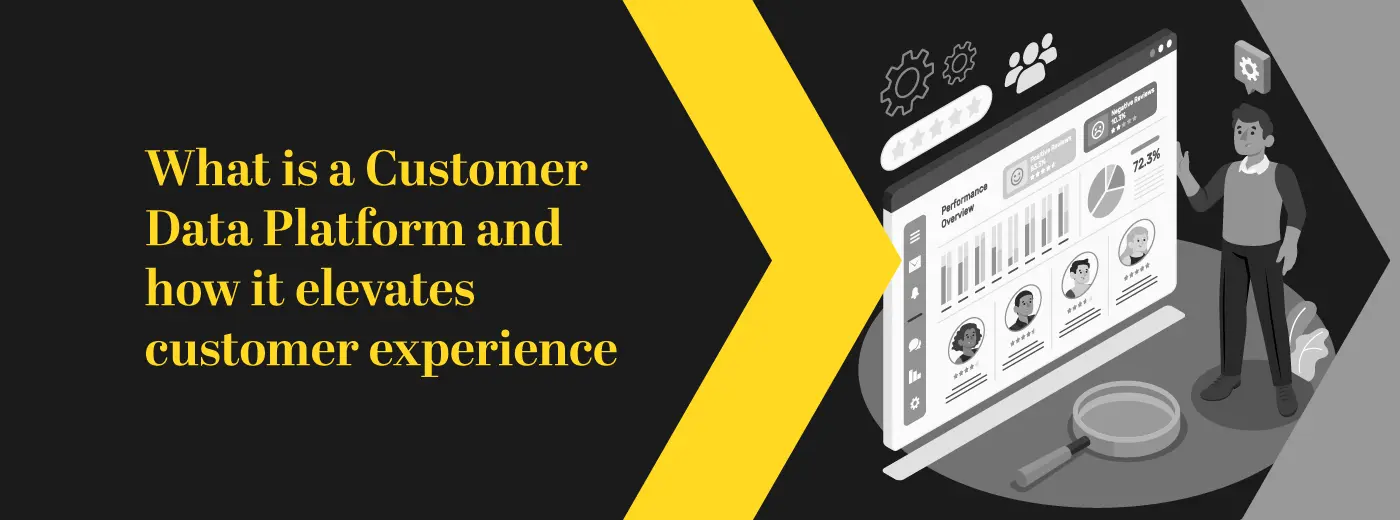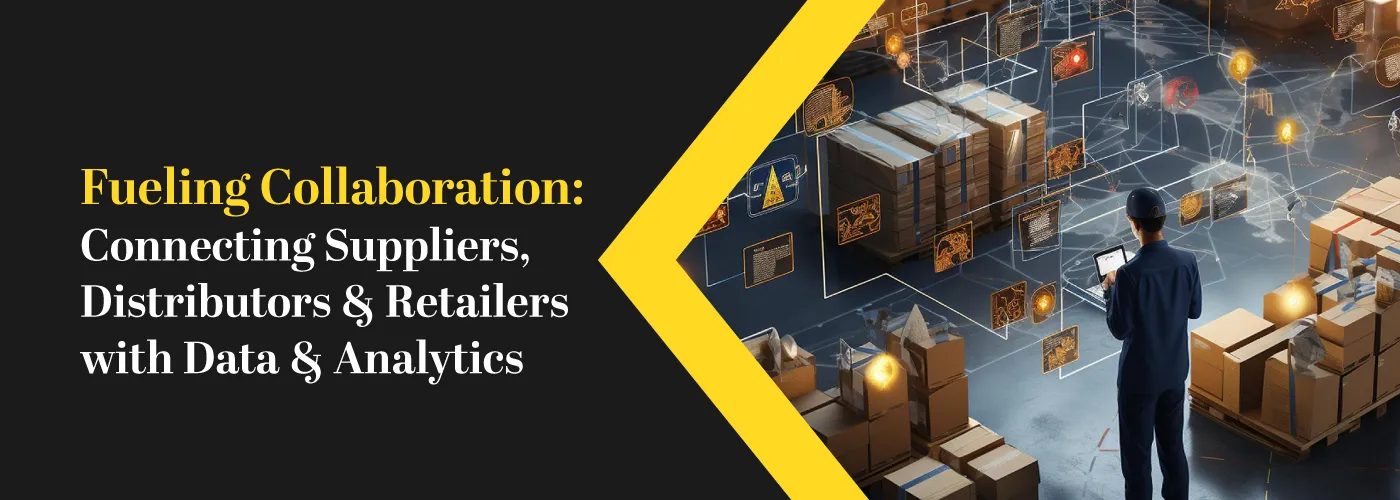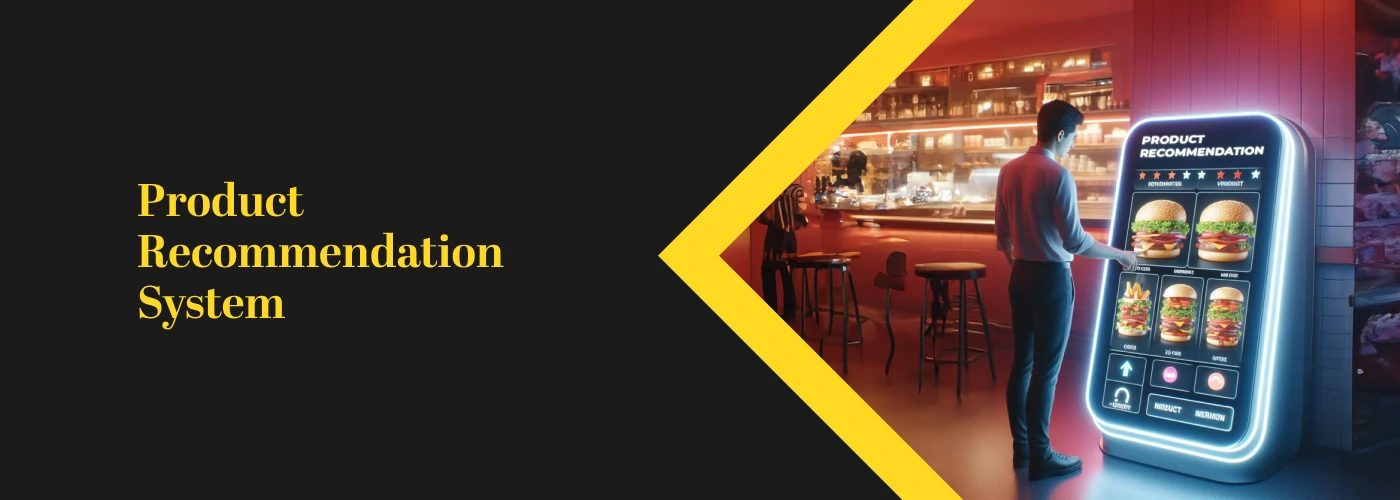Editor’s Note: Learn about Customer Data platforms, and what they mean for marketing, data, tech, and customer experience teams. Also, know how it differs from MDM and CMP for a clear understanding of its benefits and uses.
What is a Customer Data platform and what it is not
Gartner defines a Customer Data Platform as a data management platform that controls the flow of data in and out of an organization. It supports data-driven ad strategies, such as segmentation. Simply speaking, it enables marketing and customer experience teams primarily to unify customers’ data by offering a “single trusted view”.
Faced with a growing need for customer retention and growth in a highly data-regulated environment, marketers are looking for ways to use their first-party customer data. That’s why the role of CDP has become more important. But how do you get the “single view”? Most organizations have data existing in silos, connected by systems that don’t integrate. From these systems, you can combine the three major types of customer data namely:
“Customer Data Platform stands at the top of the utilized data and analytics solutions with 62% of people finding the impact moderate to high.”
Gartner
What a CDP is not: It is not an Enterprise Data Warehouse nor a CRM nor a Data Management Platform nor a Multi-channel marketing hub. The primary use of a customer data platform is with data collection, profile unification, segmentation, and decision making whereas others focus on one or two of them. We’ll explore the differences in detail in just a while, keep reading.
Why now: Added benefit of Generative AI
Though we’ve answered the heading – the added importance lies in why we’re talking about this now. Though CDPs existed in the past too, the added advantage now is Generative AI. With Generative AI sending personalized replies and messages based on the situation can be made faster. For example, customer experience especially post-sales can be enhanced, look at the image below:
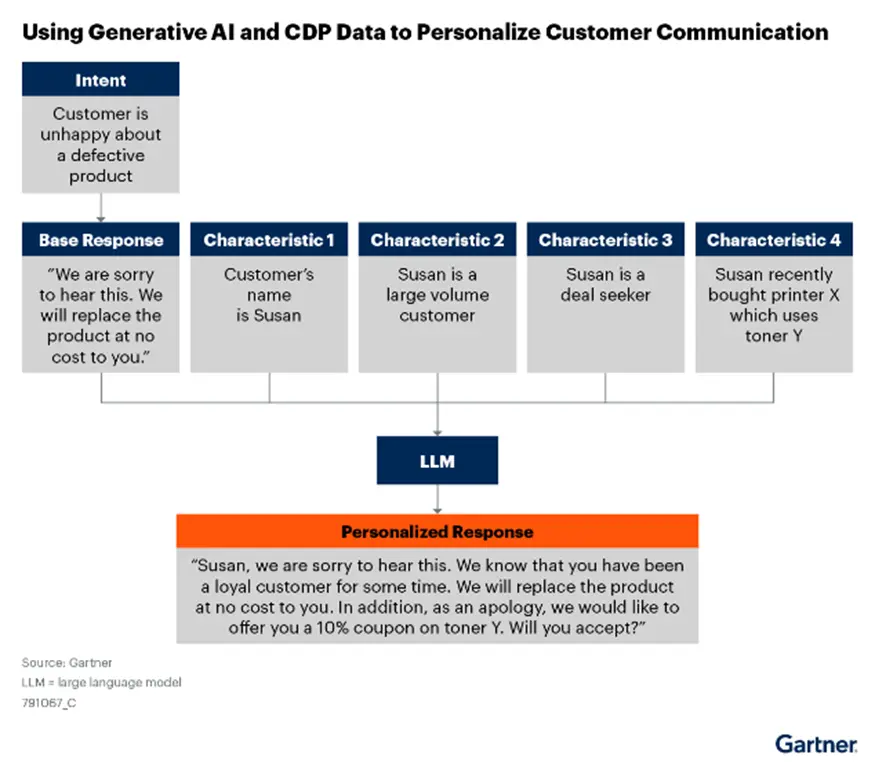
This combination of CDP and GenAI allows for a much more meaningful and thoughtful conversation between the bot and the customer, which cannot help entirely but will reduce escalations to the call center and improve overall customer satisfaction. You can take leaps in personalized communication not just for customer service or post-purchase experience but also to give insights during pre-sales or marketing.
Why you need a CDP: Understanding the benefits for CX
Before we break down the components of a Customer Data platform it is important to understand the “why”. Understanding the result will help you get a better overview of the process later. Though the most common benefit of a customer data platform as explained above is improving customer experience and the other one is for targeted insights and ads, other benefits include:
With a holistic understanding of customer data, businesses can personalize their interactions and communications. This leads to more relevant and timely messaging, resulting in an improved customer experience. As you know personalization can enhance customer satisfaction and loyalty. But all these efforts should be linked to each other, that’s where a CDP plays a major role.
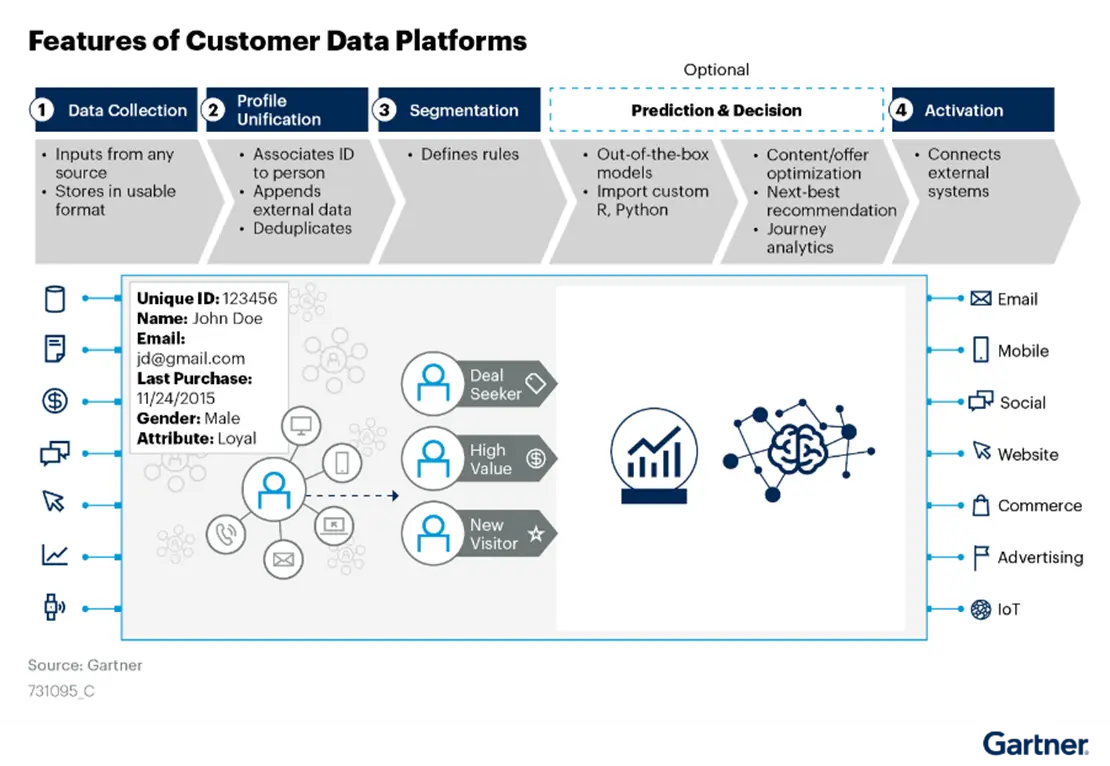
What makes CDP different: Key functions and differences from other platforms
To understand how a customer data platform is different, you’ll need to first understand the functions that a CDP has:
- Data Collection & Storage: Data from multiple first-party data sources (structured, unstructured, and semi-structured) like Websites, Mobile apps, OTT devices, CRM, BI tools, etc. is collected via connectors, APIs, SDKs, and stored in data warehouse/ data lakes for consumption in a useful format with the requisite security standards.
- Integration: Integrating not just the data together but the data sources are integrated into the existing MarTech Stack to create a comprehensive data structure. This will ensure that data is democratized and distributed effectively across multiple teams like sales, customer service, support, etc.
- Data Quality Protection: This will help maintain and monitor accurate data by eliminating data duplication, and adding structure, consistency, and attributes of data collected. This is key in segmenting and classifying business users to build profiles.
- Data Activation & Personalization: CDP enables marketers to create an omni-channel experience across the customer journey. By bringing in personalized insights based on historical interactions and insights CDPs allow marketers to provide relevant product and content recommendations.
- Data governance: One of the key aspects of any data platform would be data governance, and CDPs provide the ability to granularly enforce and regulate all the touchpoints and events to be passed onto the system, and track all data subject requests like access, portability, and deletion.
A typical architecture of a CDP would look like this:
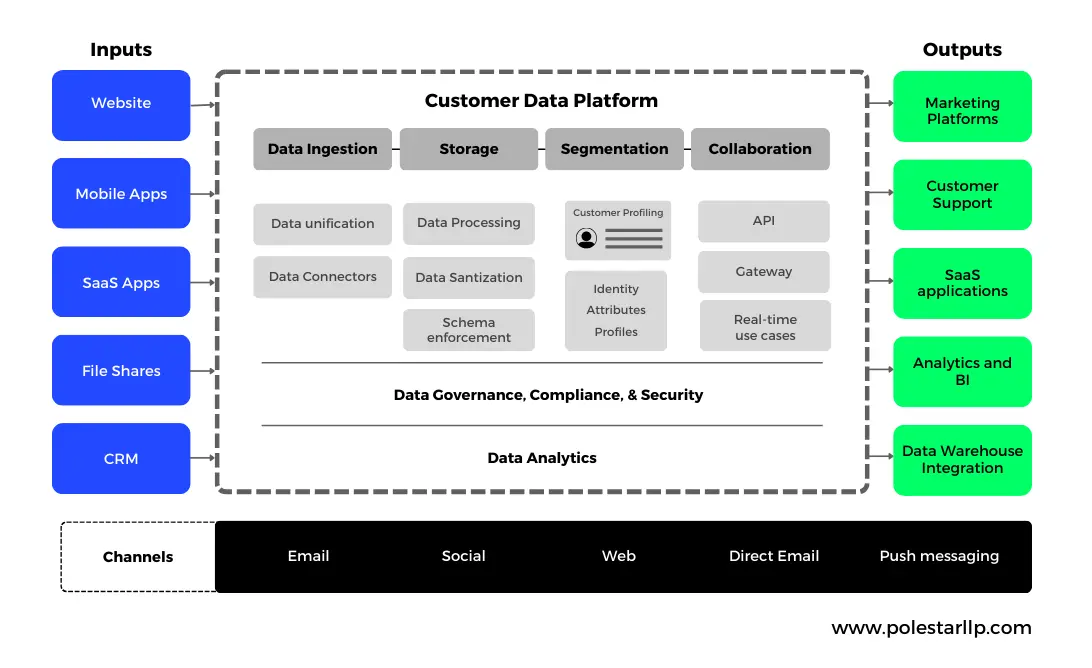
Now coming back to the question: How is a CDP different from other data management platforms?
Usually, people question whether they have an MDM or a CRM, so why do they need a CDP? Because even though they might feel like they are for mastering your data, the architecture, process, and result are all different.
MDM vs CDP
What is MDM? Master Data Management solutions provide a view of the most critical data objects for an organization, for example, customers, suppliers, employees, locations, assets, etc. It is more of a technology-enabled discipline to ensure uniformity, discipline, and consistency across shared master data assets.
But a customer data platform that is primarily for marketing and customer-facing teams. Sometimes the necessity of a CDP arises from managing non-master data, often unstructured and in large volumes which might need flexibility in rules (from master data).
Here are a few differences:
| MDM | CDP | |
|---|---|---|
| Scope | Multi-domain and Enterprise-wide | Limited to customer data |
| Used for | Consolidated all key records | Consolidate Customer records and Martech stack |
| Predominant features | Data Integration, Quality, Stewardship, Modelling, Unification, etc. | Data Capture, Profile Unification, Segmentation, Activation, Integration, Quality, etc. |
| Data Sources | Applications, Regional Hubs, CRM, anything | Customer data, CRM |
| Goal | Creating a trusted fundamental layer for enterprise-wide use | Marketing or Customer specific applications |
CDP vs CRM
When comparing these two the comparison is between platforms that manage customer data. But CRMs are primarily focused on managing and optimizing interactions between a business and its existing and potential customers by maintaining detailed records of customer interactions and transactional data.
Whereas a CDP is useful for creating a unified consumer profile and handling multiple types of data sources for personalized marketing and engagement. In most cases data from CRM is fed into CDP for creating a complete consumer profile. In most cases, depending on the needs of the business they’ll have to choose between one or two of these.
Finally, do you need a CDP?
Though the question sounds simple, there are a lot of considerations that influence the decision like the size of the company, it’s business goals and how this would fit into the customer engagement strategy, and the cost factors like:
- Data size
- Benefits it would provide
- Cost of training
- Real-time data requirements
If you are confused about how beneficial it would be for you, or how it would go into your Martech stack or how to proceed with the integration, or if you want a comparison between MDM or other data management platforms with Customer data platform or want an enterprise data management strategy for you, then contact our experts today.
